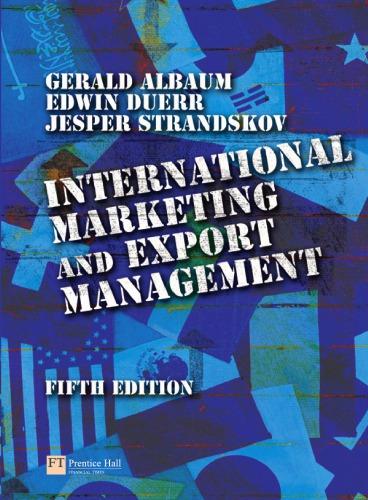3. Should BRL Hardy consider buyer labels for its green product? One of the major challenges facing...
Question:
3. Should BRL Hardy consider buyer labels for its green product? One of the major challenges facing Australian firms in the international marketplace is how to differentiate their products from those of competitors. The global wine market is highly competitive and characterized by multiple players, labels, and products. One such player is BRL Hardy, Ltd.
Although by 2002 Australia had captured only 5%
of the world’s wine market, Australian wines were the fastest growing import category in key markets such as the United Kingdom and the United States, taking market share from traditional ‘old world’ wine producers such as France, Italy, Germany, and Spain.
Australia’s success to date stems not only from its comparative advantage of producing quality wines at reasonable prices but the ability of Australian wine companies to build brands to compete internationally.
BRL Hardy has identified a unique global market segment of a wine targeted at the environmentally conscious.
The case covers the initial stages of the implementation of the strategy to position its Banrock Station brand of wines in the environmentally conscious segment, through to a promotional program of
‘green’ international wine marketing.
Background BRL Hardy, Ltd was formed after a 1992 merger of South Australian-based wineries, Berri Renmano Ltd and Thomas Hardy and Sons Pty Ltd. It is now one of the top four wine producers in Australia and one of the top 10 largest wine groups in the world. Its Banrock Station brand, produced from grapes mostly grown in the Riverland region of South Australia, is the rising star of the company’s wine portfolio. The first wine stock was produced as recently as 1995, and now production is 2.4 million cases a year.
In 1994 BRL Hardy acquired Banrock Station with 250 hectares of good soil for producing premium grape varieties. The rest of the property is made up of 900 hectares of wetland and 600 hectares of protected Mallee Woodland eco system. The property was suffering from the impact of prolonged farming and grazing.
BRL Hardy, together with Wetland Care Australia, undertook a huge revegetation program to remove stock, install fish barriers and reintroduce natural wetting and drying cycles in the wetland. This has resulted in the native birds and fish, water plants, frogs, and insects returning to restore the health of the River Murray.
The 250 hectares of new vineyard are used to produce five major wine varieties. As Table 9.6 shows, red wines are more favored than white wine varieties.
The vineyard’s total yield per year is 5000 tons, which converts to 3,500,000 liters of wine or 380,000 cases. The additional tonnage required to meet domestic and export demand of over 2 million cases comes from purchasing other grapes from local producers in the Riverland.
Step by Step Answer:

International Marketing And Export Management
ISBN: 9780273743880
5th Edition
Authors: Gerald Albaum, Edwin Duerr






